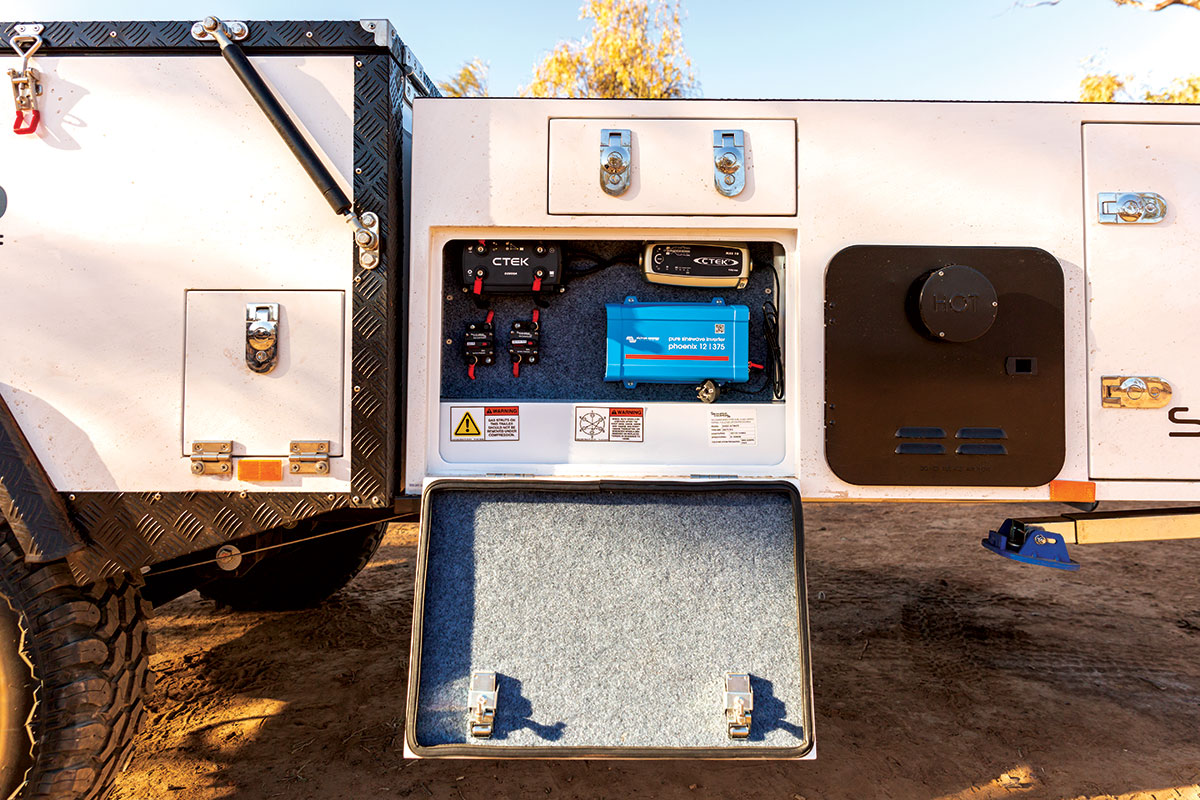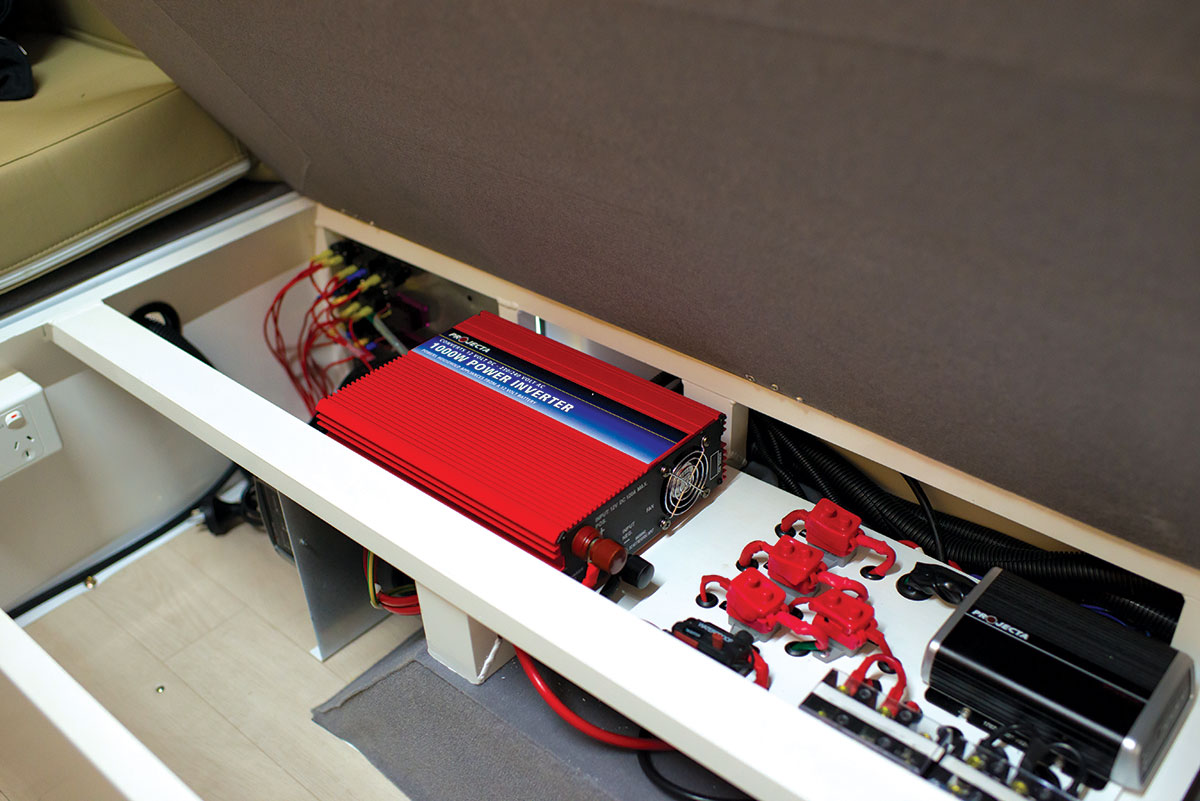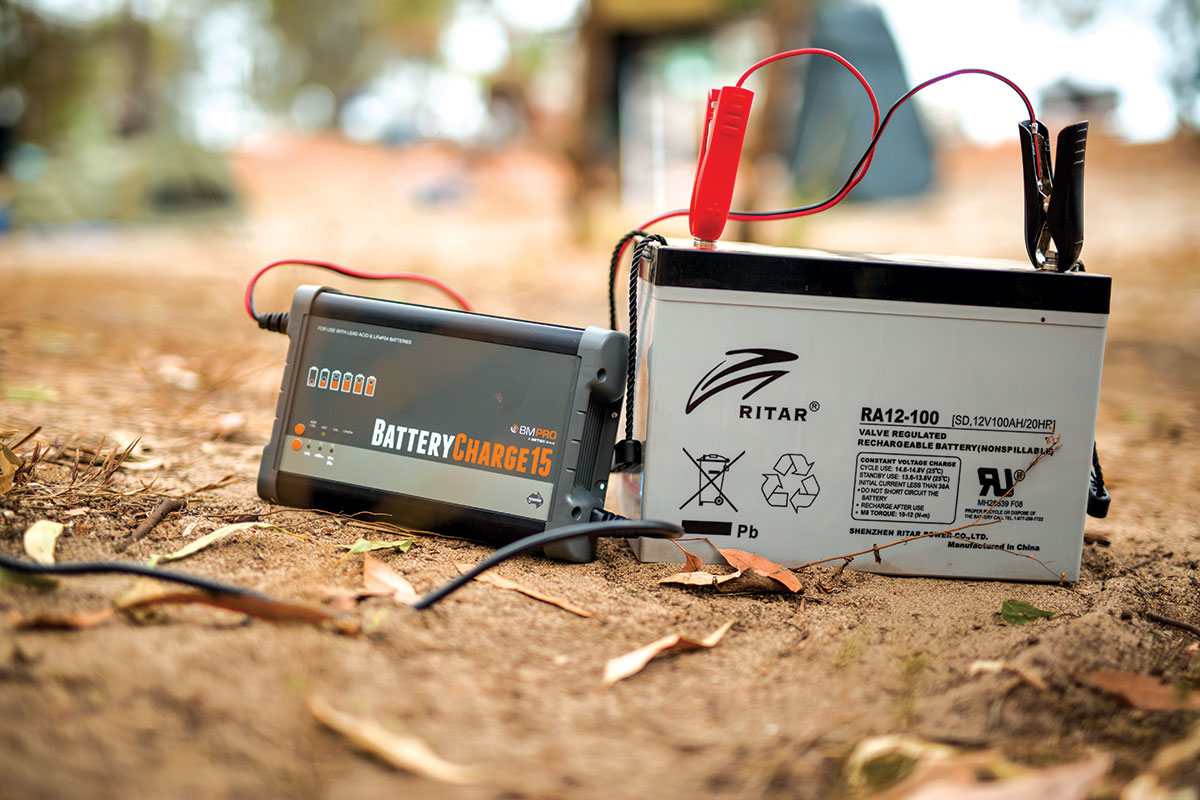So, let’s dive into the world of battery chargers to ensure you’re ready for your next camping adventure. A good-quality battery charger is a wise investment, no matter what kind of camper you are.
After all, there’s nothing worse than arriving at your chosen campsite only to find that your bank of batteries hasn’t charged during the drive. Or hitching up the camper trailer after six months in storage and realising that the batteries have lost their charge completely. A battery charger is an easy solution to both these problems — and many other battery-related dilemmas that can ensnare the unprepared traveller.
You may or may not be surprised to find out that 12V batteries — used commonly in most caravans and camper trailers — lose their charge over time. This happens even when they aren’t being used, and even if they’re disconnected while your trailer sits in storage. A general rule of thumb is that most batteries can only handle being left without charge for a maximum of 2–3 months, and they will lose significant quality and capacity over that time. If you want to maintain the good health of your battery and ensure it can power up your gadgets and gizmos aplenty, a good-quality battery charger is the way to go.



How does a battery charger work?
When a battery is being used to power a device or appliance, a chemical reaction takes place within the battery that causes electrons to flow between the positive and negative electrodes via the electrolyte. A battery charger works by reversing that chemical reaction, thus, recharging the battery.
What kind of chargers are there?
A modern RV 12V can be — and often has to be — charged from multiple sources. The most common of these sources are tow vehicle alternators, mains chargers and solar panels.
The majority of camper trailers use 12V lead acid batteries, and the most common type of chargers for these are ‘multi-stage chargers’ (see below), which can be left connected and running all the time.
Another possible installation is a 240V charger, which can be hardwired and mounted on the rig. These 240V chargers are handy to keep the batteries topped up at caravan parks, or when you have the trailer sitting idle in the carport or storage during the winter months.
You may also choose to run a DC-DC charger, which can be used while you’re driving. This will boost the voltage up to 14.4V to give your battery the best and fastest charge possible while you’re on the road.
Choosing the right charger for your battery

While all batteries need to be charged, no matter what kind, you do need to choose the right kind of battery charger to suit your setup and charging requirements. Once upon a time, things were simple, and any old charger would do. Alas, battery technology has changed, and battery chargers must follow suit.
The best charger for your battery is one that is matched to the battery: i.e., one that has the necessary electrical current capacity, adjustable output and a charging profile/compatibility to match the battery. While a constant voltage and current will charge a battery quickly, it’s considerably better for a deep cycle battery’s health if a ‘trickle’ charge is used over a longer period of time. Multi-stage chargers are considered best for this purpose.
What is a multi-stage charger?
Multi-stage chargers are ‘set and forget’ intelligent chargers which use a range of charging programs, or ‘states’, to keep your battery at peak capacity and in good health. The charger will assess the battery and choose the correct state for each part of the battery’s charging cycle. These days, most high-quality modern multi-stage chargers will have at least seven different stages to cycle through, sometimes even 10.
For example, in the case of lead acid deep cycle, gel cell or AGM batteries, all of these batteries require a cycle that in a base form consists of three stages — bulk, absorption and float. Bulk is the first stage, where the rated current of the charger is delivered to the battery at a constant voltage. The absorption stage delivers current at slowly reducing voltage, while the float or ‘trickle’ charge keeps a fully charged battery from discharging — something that happens whether a battery is being used or not.

Do I need a different charge for lithium batteries?
Lithium iron phosphate (LiFePO4) batteries are becoming much more common in the camping market and have very different characteristics and composition to other batteries. LiFePO4 batteries have a much smaller voltage tolerance and because of that, the ‘trickle’ charge of the deep-cycle battery does not apply. This means a LiFePO4 battery can be charged faster while minimising the risk of overcharging — one of this battery’s many noteworthy qualities.
So, before you hit the road only to realise you aren’t as powered up as you thought, make sure you’ve got a suitable battery charger on board.
THE NEXT STEP
Are you ready to experience the freedom of the open road? Don't wait - Find your dream getaway now!
RELATED ARTICLES:
New lithium battery range from REMCO




